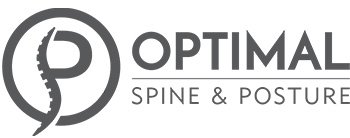Poor Posture and Hyperkyphosis Treatment in Boise, Idaho
Poor posture is becoming one of the most common spine-related health concerns in today’s society. You start to recognize that your posture is starting to hunch over, clothes are fitting differently, and you seem to be losing your height and shrinking! Your spouse, friends and family are suggesting to you more and more to sit up straight. If these are some of the things you are seeing and hearing, then you likely have what doctors call hyperkyphosis. Sedentary lifestyles, increased usage of tablets and smartphones, a desk job for 20+ years, being a student, and many years fighting gravity here on Earth are all factors as to why hyperkyphosis is becoming an epidemic in today’s society.

Normal Posture
Posture is how our spine holds our body when standing or sitting. Posture is measured and observed in both the front (coronal) and side (sagittal) views. From the front, the center of the head should be over the center of our ribcage and shoulders… the head should not be shifted, tilted or rotated. The shoulders and ribcage should be centered over the hips/pelvis. There should not be one shoulder higher than the other and both shoulders should not be shifted to one side. Also the center of the hips should be centered over the feet.
From the side, the ear should be on top of the shoulder, the shoulder in line with the hip joint, and the hip should be directly over the ankle.
Normal posture and spine alignment allows for maximum energy efficiency while minimizing the effect of gravity and forces on joints, muscles, and ligaments.
Forward Head Posture
Forward head posture is seen when the head translates or shifts forward. This can be observed with posture photos and on X-ray. When this happens, it increases the stresses and strains on the muscles and ligaments, most commonly in the upper back and near the skull. The engagement required by the muscles to hold the head up doubles for every inch the head translates forward. For example, a 10 lb head translated one inch forward will feel like holding a 20 lb head, two inches 40 lb head.
Why is this important? This causes increased pressure on the bones of the spine and discs. This increased pressure causes the bones and discs to break down faster, leading to disc degeneration (degenerative disc disease) and bone spurring (osteoarthritis).
Hyperkyphosis
Hyperkyphosis is excessive rounding of the upper spine. Numerous research studies have shown hyperkyphosis is associated with neck pain, headaches, back pain, disability, lower self-esteem and decreased Health Related Quality of Life (HRQOL). Research has also shown that elderly patients with hyperkyphosis have a shorter life-span compared to patients the same age without hyperkyphosis. Hyeprkyphosis effects 20% to 40% of the population and is more common in the elderly population. There is not just one single cause of hyperkyphosis and is thought to be a result of multiple factors. These factors can include degenerative changes of the spine, vertebral compression fractures, muscular weakness, and altered biomechanics or poor posture. Hyperkyphosis in recent years is now becoming more frequent in younger populations due to sedentary lifestyle and the technological age.
Conservative, non-operative treatment includes spine rehabilitation programs such as Chiropractic BioPhysics and kyphosis bracing. These treatments have been found to be effective in reducing kyphosis and improving spine biomechanics, shown by multiple published case studies. Chiropractic Biophysics uses precise spinal traction, combined with exercises and spinal adjustments to reduce the rounding of the spine.
Scheuermann’s Disease
Scheuremann’s disease is the most common cause of hyperkyphosis of the thoracic and thoracolumbar spine in adolescents. Secondary only to scoliosis it’s one of the most common spine deformities. This condition is characterized by vertebral body wedging and endplate deformity, called Schmorl’s nodes.
Scheuremann’s kyphosis develops prior to puberty and appears in the posture of kids most prominently during adolescent growth. The onset usually begins between the ages of 12 and 15. Adolescents diagnosed with Scheuermann’s disease have a higher incidence of back pain, lower health related quality of life and poor general health.
Treatments are typically non-operative: Adolescents with a kyphosis 45-50° can be treated with spine rehabilitation programs such as CBP. Curves 50-55° in the thoracic spine can be treated with intensive spine rehabilitation programs and part-time bracing. Curve >55° are recommended intensive rehabilitative programs and full-time bracing. Surgery is commonly recommended for curves >80° that have not responded to conservative treatment, or when the lungs and heart become compromised.
Treatment for Poor Posture and Hyperkyphosis
Current evidence recommends early conservative treatment for correcting spinal alignment and improving posture. Chiropractic BioPhysics (CBP®) is a proven method of spine correction that includes corrective exercises, adjustments and traction that rehabilitates the spine to normal. CBP has published several case series and case studies demonstrating the effectiveness in correcting spinal alignment such as reducing forward head posture, decreasing thoracic kyphosis and improving sagittal balance:
